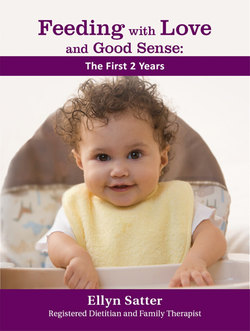Читать книгу Feeding with Love and Good Sense: The First Two Years - Ellyn Satter - Страница 5
ОглавлениеTable of Contents
1. Where you are going with feeding
Think of your child as a future toddler. By 8 to 18 months, your tiny baby will be a good eater and ready to join in when you have family-friendly meals.
2. Follow the division of responsibility
To raise a good eater, do your jobs with feeding and parenting, then trust your child to do her jobs with eating, moving, and growing.
3. Understand your child’s development and temperament
Being able to recognize stages in development and understand temperament lets you trust and enjoy your child and parent in the best way.
4. How to feed your newborn and infant
Your baby eats best and feels best about you—and about eating—when you pay attention to her and do what she wants.
5. How to feed your older baby and toddler
Start and progress solid foods based on what your baby can do, not how old he is. Rules about when and what to feed make you ignore your baby and doubt your judgment.
6. What to feed your child: step by step
Your child might progress from starting solids to joining in with family meals in a couple of months, or it may take a year or more. Go as fast or as slowly as is right for her.
7. Solve feeding problems
To correct feeding problems, be sure to do your jobs and just as sure to refrain from trying to do your child’s jobs. Focus on the quality of feeding rather than the quantity your child eats.
8. What you have learned
Feeding is parenting in all ways. You have to do your jobs, but then you have to let go. Throughout the growing-up years, maintain a division of responsibility in feeding.
